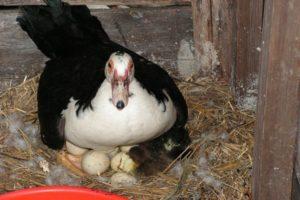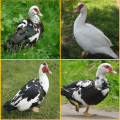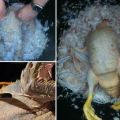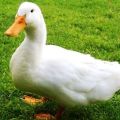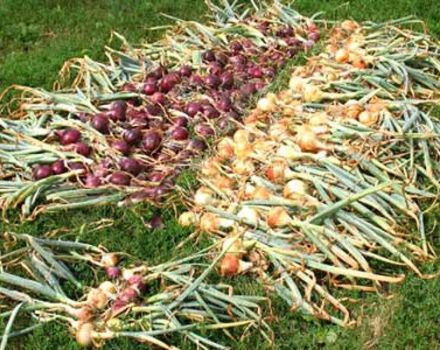How to make a pool for ducks at home with your own hands, drawings
Experienced poultry farmers state that ducks and their offspring grow up healthy and gaining weight quickly, swimming in a spacious pond, and not in a trough or puddle. If there is no natural reservoir near their places of detention, an artificial one can be built. To create a pool for ducks on your own, with your own hands, is not as difficult as it might seem at first glance.
What is a duck pool for?
The main task of the duck pool is to ensure the rapid growth of the bird and maintain its immunity. Without water, waterfowl experience discomfort and health problems.
Young duck offspring bathe for the first time:
Waterfowl, ducks that can swim even in a small pond provide their owners with better quality meat. Poultry growing without a reservoir at home has excess fat layers in the meat, and this negatively affects its taste.

The benefit of the reservoir is that it reduces feed costs. Ducks replenish their diet with aquatic vegetation (duckweed), aquatic insects, and small fish. Solves a pond and another problem - a drinking bowl.
What is needed for construction
Before building a bird pool, it is required to carry out certain earthworks - digging a hole to the size of the future artificial pond. For ducks, a body of water with a depth of about half a meter is preferred. In such a pool, the water warms up faster, which will allow little ducklings to dwell there without any problems.
Moreover, if the water surface is filled with duckweed, waterfowl will receive additional green food. However, we must remember that ducks pollute water quickly, and if it is not replaced, it will bloom, turning into a fetid puddle.

Those who cannot get to groundwater should use waterproofing when equipping the pool. As a rule, these are ordinary PVC or special (butyl rubber) films.
The latter are not difficult to acquire. Sold in rolls. The main goal is to create artificial reservoirs. This waterproofing is safe, does not harm nature, the ecosystem. Withstands both low and high temperatures, having a long service life, from 10 years or more.
Pool area
One of the basic requirements for a duck pool is that it shouldn't be a swamp.To prevent water from turning into a dirty, foul-smelling slurry, the water must be circulated and filtered.
The most preferable position is that poultry farmer, on the site of which there is a lowland. There, the groundwater is shallow, at a level of 1.5-2 m. In this case, an hour of work of a hired excavator allows you to find a foundation pit, which will instantly turn into a small lake.

However, we must remember that over time the water will wash away the banks, the artificial pond will become larger and shallower.
In order to independently create a duck pond, you should initially attend to the choice of a place. Usually, for this, they choose the territory at the corners of the land plot, with the presence of natural depressions (pits, beams, ravines).
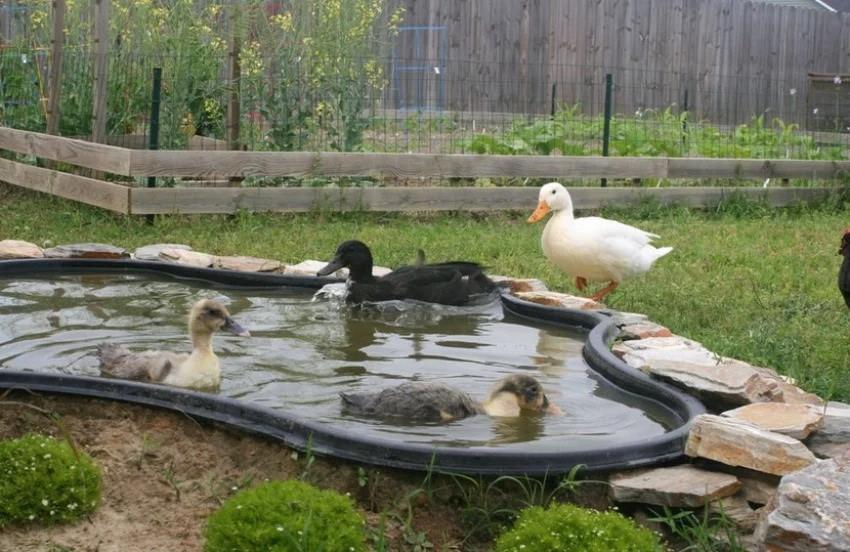
Drawings and materials
Capital duck pools, requiring financial costs, are built for waterfowl, the livestock of which is more than 100 pcs. For reference, a 7 by 7 m pool satisfies the needs of about 300 ducks. More voluminous ones are considered unprofitable, since the costs of their construction pay off for a long time. Usually, a large reservoir is trusted to be built by specialists who can work according to drawings and diagrams. One example would be a body of water built according to the drawing below.
The duck pool must be equipped with a drain system. For earthworks, special equipment is used, a concrete mixer or ready-made concrete. It is estimated that a pool with a diameter of 6 m or more will pay off in 4-5 years. But the costs of its construction can be afforded by farms that routinely breed ducks.
Work on the creation of a capital reservoir for waterfowl begins with the selection of a site and the preparation of project documentation.
Next, a pit is dug, a trench for the drainage system and the drainage pit itself. The volume of the latter should be the same or larger than that of the reservoir being created. The definition of its place is also important. It should be done deeply.
The dug earth should be taken away as far as possible. If you leave it nearby, the ducks will begin to swarm in it, turning the surroundings into a swamp. Metal fittings and stones are laid along the perimeter of the pit. The bottom of the artificial pond is concreted.
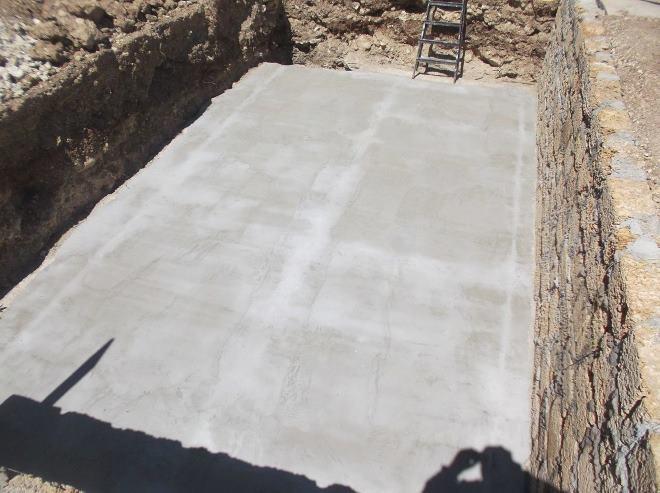
With the use of formwork and reinforcement, concrete walls are erected. After drying, they are treated with a special primer to prevent leaks and ensure a long service life.
The edges of the pool are sealed so that the birds do not damage them.
An example of creating a capital pool for waterfowl:
How to make a duck pool with your own hands
Poultry breeders with small numbers of ducks usually use homemade ponds. You can easily buy a plastic bathing container, which is placed in a dug hole with subsequent strengthening.
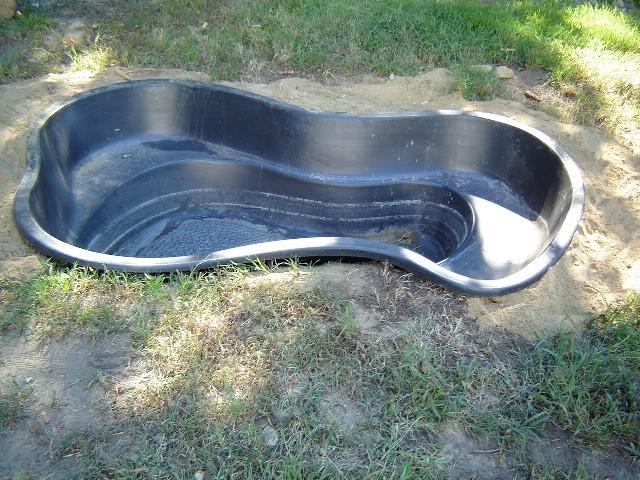
A drawing of one of these artificial reservoirs is shown below.
There are many options for homemade ponds. Often there are dug holes made of film, slate, ground stone.
For those who do not want to burden themselves with any work with an artificial reservoir, a bath, a trough, and other household containers will be useful.

An example of creating a bird pond with your own hands:
The principles laid down in a homemade duck pond are few, but they must be taken into account.
So, one gentle bank should be provided so that the bird enters the water without hindrance.
It is necessary to create conditions for the retention of water in the pool. If the soil is sandy or otherwise, freely permeable to water, and there is no waterproofing, systematic topping up of liquid is required. To reduce its evaporation, you can create a canopy or choose a place with natural shade.
The bottom of the duck pond is covered with clay 10 to 15 cm thick, which is rammed. Then a layer of pressed sand of 10-15 cm is poured on top.
However, it is most rational to use waterproofing materials.They are laid at the bottom of the pit. The budget option is a thick plastic film, laid in 2 layers. Its edges that come out to the surface are reinforced with stones. And the film covering lying on the bottom is covered with soil (sand) so that the ducks do not break it with their paws.
